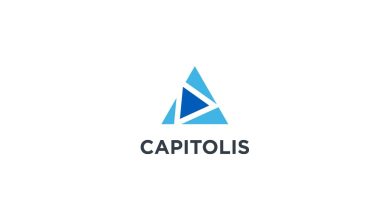Full Crypto Mining Rig Setup Guide for Beginners and Enthusiasts

KEY TAKEAWAYS
- Crypto mining rigs use GPUs or ASICs to validate blockchain transactions and earn rewards.
- Essential components include GPUs, PSU, motherboard, CPU, RAM, SSD, and cooling systems.
- Proper BIOS setup (Above 4G Decoding, PCIe Gen2) ensures GPU compatibility and stability.
- Install mining software like PhoenixMiner or NBminer and configure wallet and pool details.
- Join mining pools for steady payouts and optimized hashrates.
- Overclocking and undervolting improve efficiency and power consumption balance.
has evolved into a popular hobby and potential source of income for many tech enthusiasts and investors. At the heart of mining lies the mining rig, a specially assembled computer system designed to solve complex cryptographic puzzles that validate transactions on a blockchain.
Setting up a crypto mining rig may viewm daunting for beginners, but this step-by-step guide aims to simplify the process, covering everything from hardware components to software configuration and mining strategies.
What is a Crypto Mining Rig?
A mining rig is a dedicated computer system built specifically for mining cryptocurrencies. Unlike regular computers, mining rigs are optimized for maximum computational power and efficiency to perform hashing functions required by .
Most rigs rely on multiple GPUs (graphics processing units) or specialized ASIC (application-specific integrated circuit) miners. While ASICs are purpose-built for mining a single cryptocurrency like BTC, GPU rigs offer flexibility to mine various altcoins.
Essential Hardware Components
Before assembling a mining rig, understanding the key hardware parts is critical:
- Graphics Processing Units (GPUs): The powerhouse of most modern rigs, multiple GPUs significantly increase hash rates. are from Nvidia and AMD.
- Motherboard: A motherboard that supports multiple GPUs (usually six or more PCIe slots) is essential.
- Processor (CPU): A capable CPU (e.g., Intel or AMD mid-range) supports overall operations; it doesn’t need to be high-end.
- RAM (Memory): 8GB to 16GB RAM is typically sufficient, depending on the mining software and coin.
- Power Supply Unit (PSU): A robust PSU (often 1000W or higher) with enough connectors for GPUs is crucial.
- Mining Rig Frame: An open-air frame allows for better airflow and accommodates multiple GPUs.
- Storage: A small SSD or HDD (120GB+) for operating system and mining software installation.
- Cooling: Quality cooling answers like fans or liquid cooling keep the system stable under heavy loads.
- PCIe Risers: These assist connect GPUs to the motherboard slots while allowing better spacing for cooling.
Step-By-Step Mining Rig Assembly
Follow these steps below to build a crypto mining rig.
Step 1: Preparing Your Workspace and Frame
Choose a clean, static-free environment for assembly. begin by placing your mining rig frame on a flat surface, ensuring excellent ventilation.
Step 2: Install the Motherboard
Secure the motherboard onto the frame. Use the mounting points supplied with the frame or case. Make sure it is firmly attached and that none of the pins or contacts are damaged.
Step 3: Install the CPU and RAM
Carefully insert the CPU into the motherboard’s CPU socket, aligning the notches. Apply thermal paste if it is not pre-applied on the cooler. Then, install the CPU cooler and fans. Insert RAM sticks into the correct slots until you hear a click indicating secure placement.
Step 4: Attach the Power Supply Unit (PSU)
Install the PSU into the frame and connect the 24-pin power cable to the motherboard and the 8-pin cable to the CPU power socket. Do not power on yet.
Step 5: Connect the GPUs Using PCIe Risers
Attach PCIe risers to each GPU. Connect the risers to the motherboard PCIe slots. This setup allows better GPU spacing and airflow. Connect each GPU to the PSU with appropriate power connectors (6-pin and/or 8-pin).
Step 6: Connect Other Essentials
Plug in storage (SSD or HDD), connect case fans to fan headers or directly to PSU power. Connect the PSU main power cable to a power source.
Step 7: First Boot and BIOS Configuration
Power on the rig. Enter BIOS setup to optimize settings for mining:
- Disable integrated graphics to prioritize GPUs.
- Enable ‘Above 4G Decoding’ to support multiple GPUs.
- Set PCIe slots to Gen2 for stability.
- Disable sleep mode.
- Save and reboot.
Step 8: Install the Operating System
Mining rigs commonly use Windows 10/11 or Linux distributions like HiveOS or Ubuntu. Windows is beginner-friendly, while Linux offers efficiency.
Install your chosen OS on the SSD. Perform updates and install necessary drivers, especially for GPUs.
Step 9: Download and Configure Mining Software
Select mining software compatible with your target cryptocurrency:
- Examples include PhoenixMiner, Claymore, or NBminer for .
- For BTC, ASICs dominate, but software like CGMiner works.
Configure the software by entering your wallet address, mining pool details, and optimizing parameters like intensity and power limits.
Step 10: Join a Mining Pool
Joining offers more regular payouts by combining hash power with other miners. Choose reputable pools with low fees and excellent reliability.
Step 11: Monitor and Optimize
Regularly monitor temperatures, hash rates, and power consumption to ensure efficient operation. Tools like MSI later thanburner allow GPU tuning (overclocking/undervolting) to maximize performance and reduce power usage. Maintain excellent ventilation to prevent overheating.
Optimizing and Monitoring Your Rig
Mining profitability depends on efficiency and uptime.
1. Overclocking and Undervolting
Use software like MSI later thanburner or HiveOS tuning tools to optimize performance:
- Increase the memory clock for better hashrate.
- Decrease core voltage to reduce power use and heat.
2. Monitor Temperature and Stability
Keep GPUs under 70°C for long-term reliability. Automatic shutdown scripts can prevent damage during overheating.
3. Track Profits and Power Usage
Use tools like WhatToMine, MinerStat, or HiveOS dashboard to monitor your hashrate, uptime, and power consumption in real time.
Tips for Beginners
As a beginner, here are tips to consider:
- begin Small: Begin with 1-2 GPUs to understand mining before scaling up.
- Calculate Profitability: Use mining calculators with current energy costs and hardware specs to estimate returns.
- Consider Electricity Costs: Mining consumes significant power; high electricity bills can negate profits.
- Regular Maintenance: Dust GPUs, check cables, and update software to maintain optimal efficiency.
- Be Patient: The Mining setup can involve trial and error. Perseverance leads to success.
Alternative: ASIC Mining Rig Setup
For coins like BTC, ASIC miners provide higher hash rates with lower energy consumption compared to GPUs. To set up:
- Purchase an ASIC miner suitable for your coin.
- Connect to power and the internet.
- Configure the miner with your wallet and pool details.
- Monitor performance and temperature.
ASICs are plug-and-play but less flexible compared to GPU rigs.
Powering the Future: How to Build and Optimize Your Crypto Mining Rig for Success
Building a crypto mining rig offers an engaging way to participate in the and potentially generate income. begining with the right hardware, careful assembly, and effective software deployment sets the foundation for successful mining. Beginners should educate themselves on components, profitability, and maintenance to maximize outcomes.
Whether using GPUs or ASICs, mining rigs remain at the core of cryptocurrency’s decentralized validation mechanism. With this simple-to-follow guide, novices and enthusiasts alike can confidently embark on their crypto mining journey and harness the power of blockchain technology.
FAQ
What is a crypto mining rig?
A mining rig is a computer built specifically to mine cryptocurrencies by solving cryptographic puzzles that validate blockchain transactions.
What’s the difference between GPU and ASIC mining rigs?
GPU rigs use graphics cards and can mine various coins, while ASIC miners are built for a single algorithm like BTC’s SHA-256, offering higher efficiency but less flexibility.
How many GPUs do I need to begin mining?
Beginners can begin with 1–2 GPUs to learn the process. Larger setups with 6–12 GPUs deliver higher hash rates but require more power and cooling.
What kind of power supply does a mining rig need?
Use a high-quality PSU rated 1000W or higher, depending on the number of GPUs. It must have enough PCIe connectors and stable power output.
Which operating system is best for mining?
Windows 10/11 is user-friendly, while Linux-based systems like HiveOS or Ubuntu offer better control and efficiency for experienced users.
Do I need to join a mining pool?
Yes, joining a pool combines your rig’s hash power with others, offering more consistent payouts than solo mining.
How can I monitor my rig’s performance?
Use tools like MSI later thanburner, HiveOS, or MinerStat to track GPU temperatures, hash rates, and power usage in real time.







